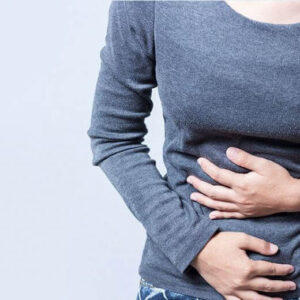
Amenorrhea is defined as the absence of a menstrual period in a woman during her reproductive age. Women who missed her three menstrual periods are dealing with amenorrhea problem. It is a normal feature in prepubertal, pregnant, and post-menopausal females. The physiological state of amenorrhea is seen most commonly during pregnancy and lactation. Apart from the reproductive years, there is an absence of menses during childhood and after menopause.
For a woman to have regular menstrual cycles, her hypothalamus (stimulates the pituitary gland), pituitary gland (that releases luteinizing hormone and follicle stimulating hormone which influence the production of estrogen and progesterone that control cyclic changes in the lining of the uterus), ovaries, and uterus must be functioning properly.
Environmental factors play an important role in determining the menstrual flow, its integrity, and regularity. Menstrual dysfunction reveals infertility and increases the future risk of various chronic diseases such as diabetes, breast cancer, and cardiovascular diseases.
What are the different Types of Amenorrhea?
There are mainly two types of Amenorrhea –
1. Primary Amenorrhea
When a woman has not her first menstrual period by the age of 14 years and no signs of other sexual characteristics (such as developing breasts and pubic hair), it is known as primary amenorrhea or delayed menarche. This is common in teenage girls who:
- Are very thin or an athletic
- Underweight
- Have a genetic problem
- Have abnormal female reproductive organs
- Imperforate hymen
- Hypothyroidism
- Having low energy availability (for example eating disorders, excessive exercise, decreased caloric intake )
2. Secondary Amenorrhea
It occurs when periods have stopped for about three months or more. It is commonly seen in
- Pregnancy
- Breastfeeding
- Menopause
- Emotional or physical stress
- Rapid weight loss
- Strenuous exercise
- Polycystic ovarian syndrome
- Premature ovarian failure
- Hysterectomy
What are the Signs & Symptoms of Amenorrhea?
The main symptom of amenorrhea is the absence of menstrual periods. Other signs & symptoms include-
- Excess body and facial hair
- Acne
- Lowering of the voice
- Altered sex drive
- Changes in the breast
- Weight gain or weight loss
- Constipation
- Dry skin and hair
- Anxiety
- Stress
- Headache
- Muscular and neural pain
What is an Ayurvedic view of Amenorrhea?
According to Ayurveda, Amenorrhea is termed as ‘Anartava’. According to Acharya Charka, the imbalance of the Vata Dosha in women is the main cause of Amenorrhea. Aggravated Vata dosha accumulated in the body and relocated to Purishvaha srotas.
Normally, the food is digested by the digestive fire and converted into rasa dhatu. This rasa dhatu provides nourishment to the successive dhatus and other tissues of the body. Anartava or menstrual blood is a part of this rasa dhatu. But when the digestion is impaired, instead of the healthy rasa dhatu, ama or toxins are produced. This ama gathers in rasavahi srotas or artavavahi srotas which causes blockage in them and stops the menstrual flow, leading to Amenorrhea.
What is an Ayurvedic Treatment for Amenorrhea?
The strength of Ayurvedic treatment is its ability to remove the root cause of the disease rather than treating the symptoms. Ayurveda has numerous natural and pure herbs which are very beneficial in the treatment of Amenorrhea.

